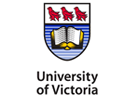Livelihood assets and survival strategies in coastal communities in Kerala, India
| Titre | Livelihood assets and survival strategies in coastal communities in Kerala, India |
| Type de publication | Thesis |
| Nouvelles publications | 2007 |
| Auteurs | Divakarannair N |
| Supprimer | Doctor of Philosophy Ph.D. |
| Numéro | 268 |
| University | University of Victoria (Canada) |
| Clé de citation: | Victoria, BC |
| Mots clés | Livelihood, Survival, Coastal communities, Kerala, India |
| Résumé | Marine fish stocks are under serious threat of depletion due to increasing numbers of resource users with competing interests, resulting in degradation and the decline of fish catch. Using qualitative and quantitative techniques such as in-depth interviews, focus group discussions, household surveys and remote sensing and GIS, this study addresses: (1) the complex and inter-related nature of resource dependency, (2) the role of assets in determining survival strategies of households in artisanal fishing communities in Ponnani, India, (3) how asset degradation impacts resource-dependent households, (4) how households develop survival strategies, and (5) considers access to social, political, physical, human and financial assets. Information is organized using the Sustainable Livelihoods Framework (SLF) with modifications to suite the local complexities.Results show that households - engaged in diverse activities, including fishing, fish processing/marketing/culture and daily labour - evolved property rights of natural resources over generations. The Pathemari cargo businesss limited knowledge of fisheries compared to artisanal fishers, and the government led modernization resulted in resource degradation. Therefore, artisanal fishers living in coastal wards threatened by intense erosion, abandoned traditional occupations in pursuit of livelihood security. Results from image analysis and derived thematic maps indicate increased erosion of 0.35 sq km shoreline coinciding with government development initiatives. To improve livelihood options, the results indicate that 50% surveyed accessed political assets such as fishers cooperatives and only 20% accessed financial assets such as government sponsored schemes and loans. In-depth interviews and focus group discussions revealed many limiting factors of access, specifically marginalization and lack of financial assets: only 6% surveyed could raise enough money to migrate. With changes in technology, from harvesting to processing, gender roles are being radically altered. Women are losing jobs and income. Politically, the study revealed that local participation helped governing bodies prioritize on housing, roads, water and sanitation.Analysis of the information through the modified SLF suggests three strategies to enhance the asset base of coastal poor: strengthening grassroots organizations; transforming state relations; and developing new alternatives to conventional coastal development practice. Finally, the study suggests resource management policies to improve the households livelihood options and well-being. |
| URL | <u>http://proquest .umi .com/pqdweb ?did=1574147001 sid=7 Fmt=2 clientId=3916 RQT=309 VName=PQD</u> |


 The Social Economy Student Network
The Social Economy Student Network


